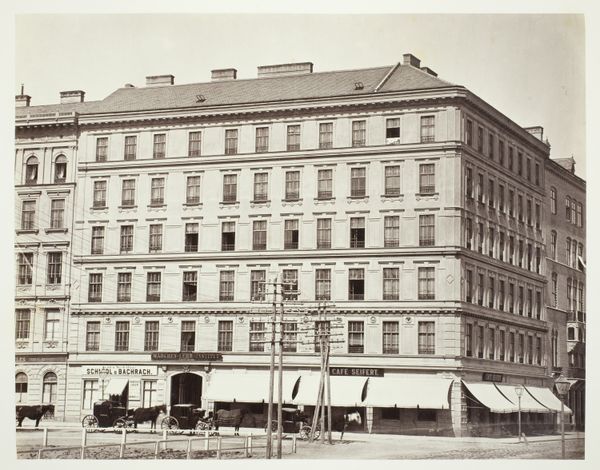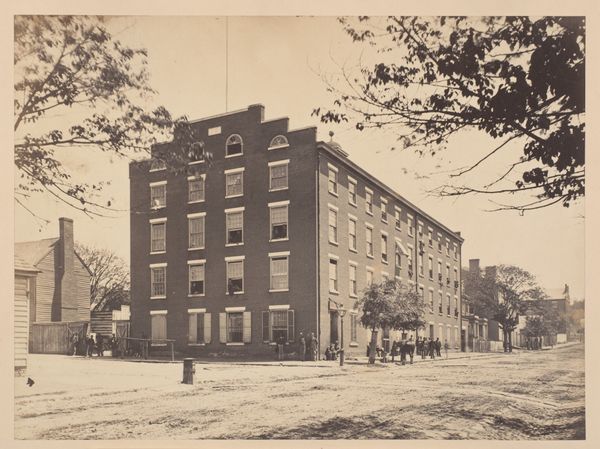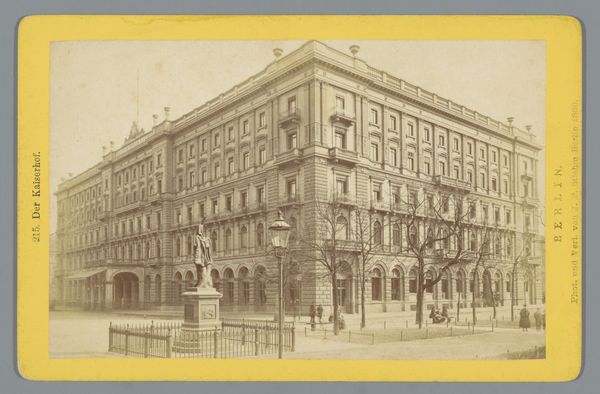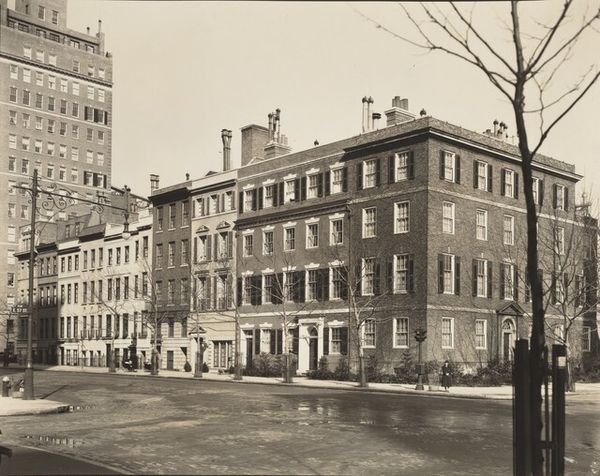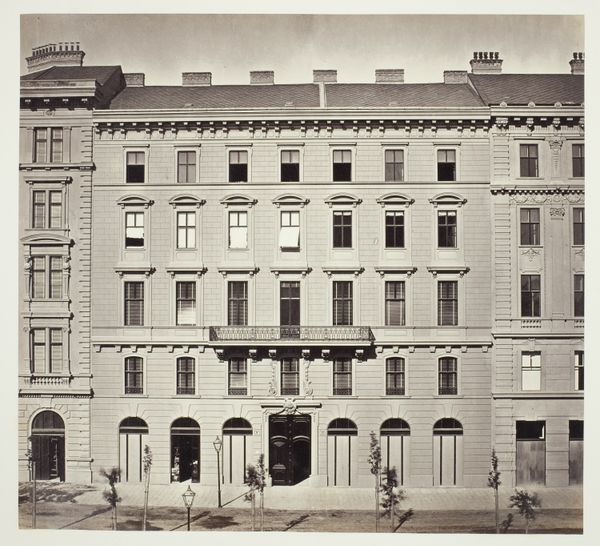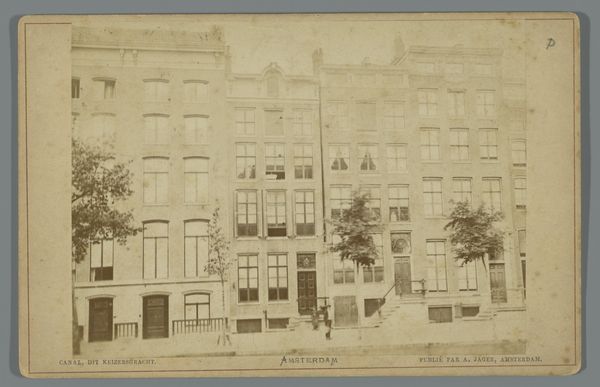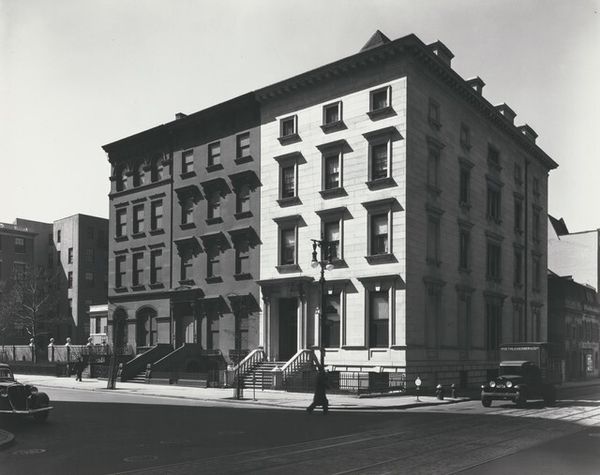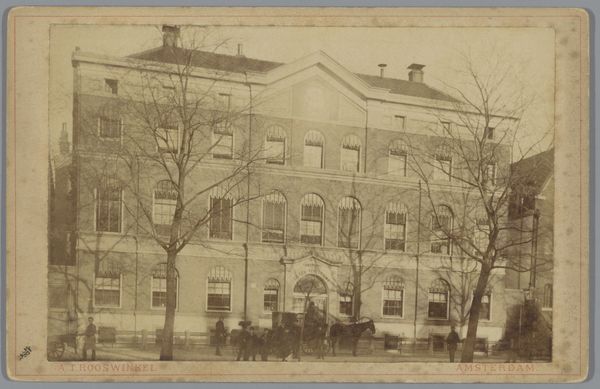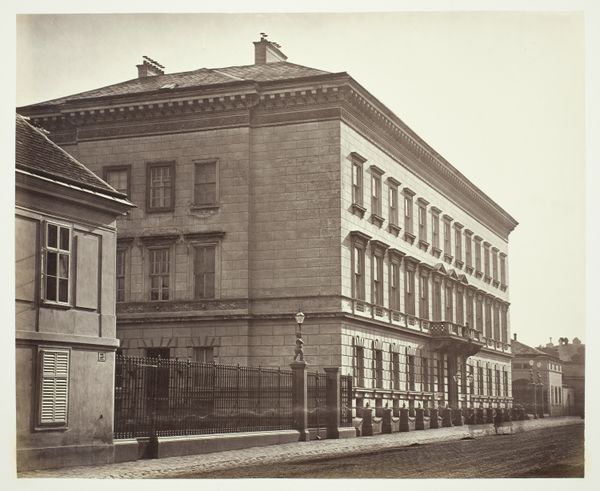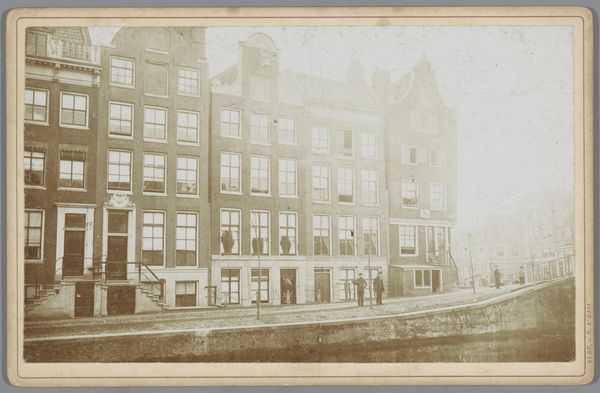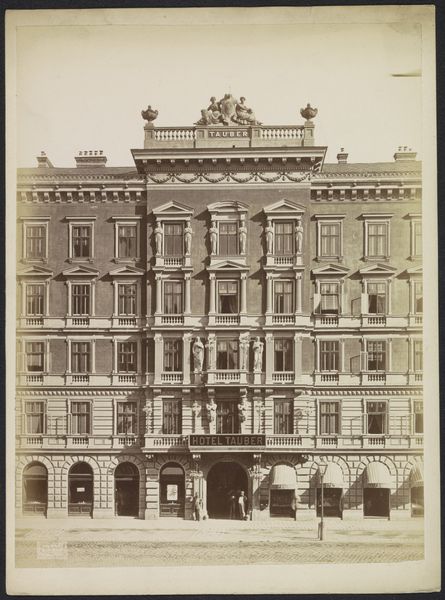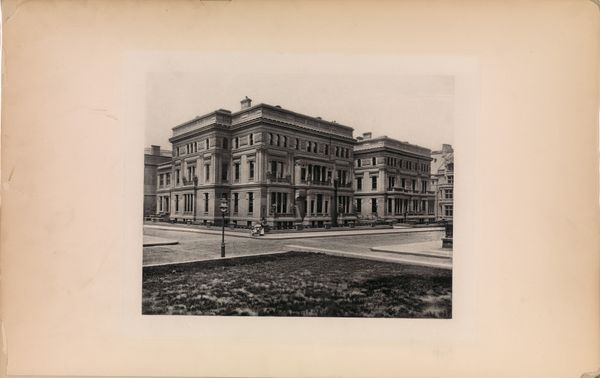
Kolowrat-Ring No. 3, Haus der Gesellschaft "Anker" c. 1860s
0:00
0:00
print, photography, architecture
#
16_19th-century
# print
#
photography
#
cityscape
#
architecture
#
realism
Dimensions: 27.6 × 29.6 cm (image/paper); 42.6 × 61.2 cm (album page)
Copyright: Public Domain
Curator: Here we have a photograph dating back to the 1860s, titled "Kolowrat-Ring No. 3, Haus der Gesellschaft 'Anker'". The location is key, isn't it? This photograph offers us a peek into urban life from over a century and a half ago. Editor: The imposing façade really strikes me. It's almost melancholic; all those closed shutters suggest a story untold. A kind of stoic grandeur hangs about it, wouldn’t you say? Curator: Absolutely. It was taken anonymously but look at this specific angle, how the building dominates. Given the social context of Vienna then—a hub of burgeoning industrialization and changing class dynamics—this building, the "Anker" society house, becomes a symbol. Were people living there or just working there, what kind of meetings, what activities took place there? I want to know more about it, like so many things from that period. Editor: Symbolism definitely leaps out. Architecture often echoes societal aspirations. The regimented windows and ornamentation maybe suggests stability, order, the prevailing values of the time. Do you notice how only a couple of the windows on the right are open, perhaps hinting at hidden life inside this stone fortress? It is all quite suggestive. Curator: Interesting perspective! Perhaps those open windows offer a hint of accessibility within this structured environment, maybe signaling societal openness despite the physical barriers suggested by its structure. I would venture to see this as the transition from a late feudal system towards a more urban bourgeois identity reflected in this stone. Editor: Ultimately, the photograph preserves an impression, of transition, you said. Its austere appearance, immortalized through this photograph, remains with us. It allows our minds to imagine past human lives. Curator: Indeed. This work really illustrates the potency of imagery in visualizing socioeconomic structures. These visual artifacts allow us to grasp how life in these changing cities was structured and functioned.
Comments
No comments
Be the first to comment and join the conversation on the ultimate creative platform.
